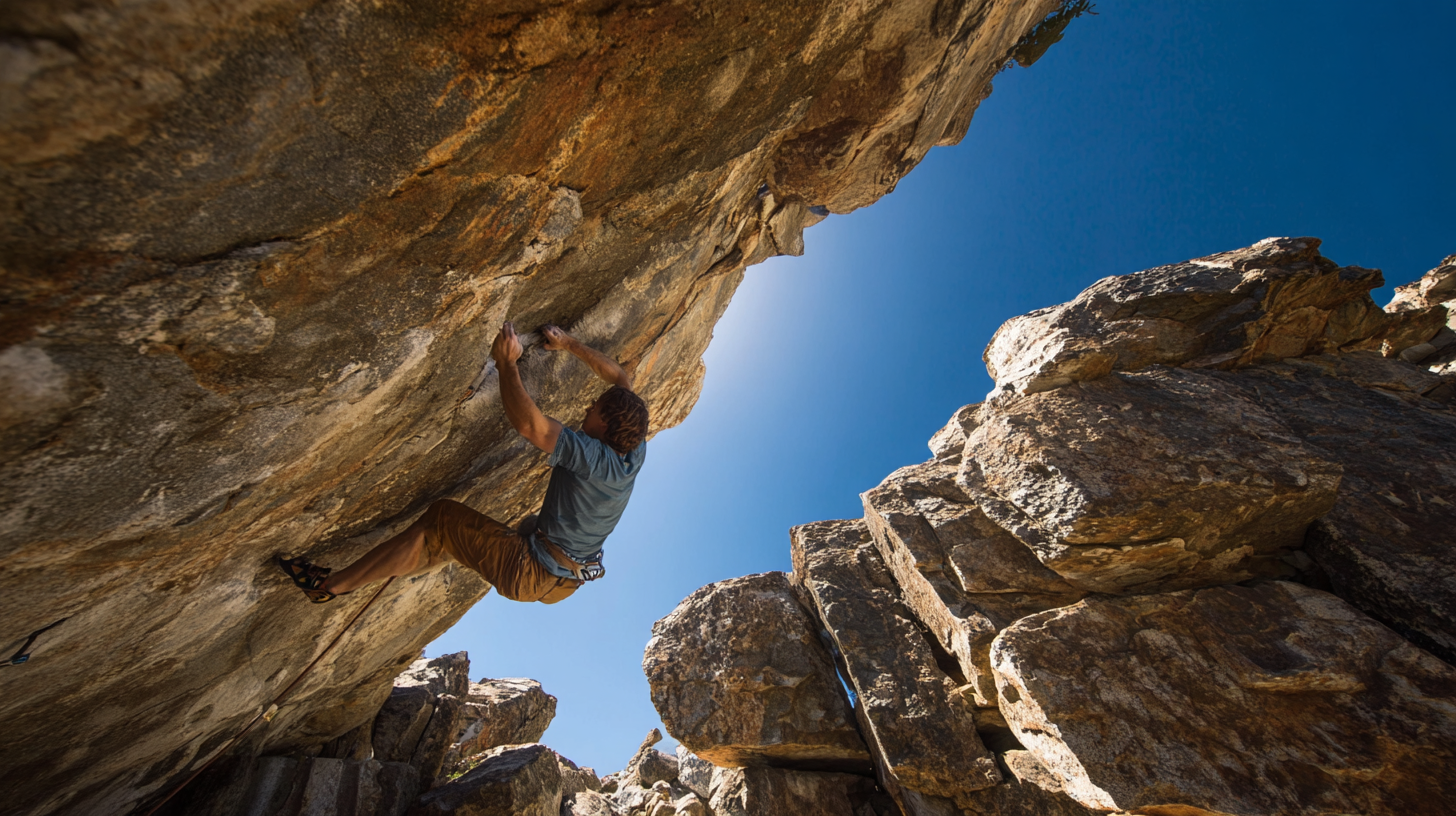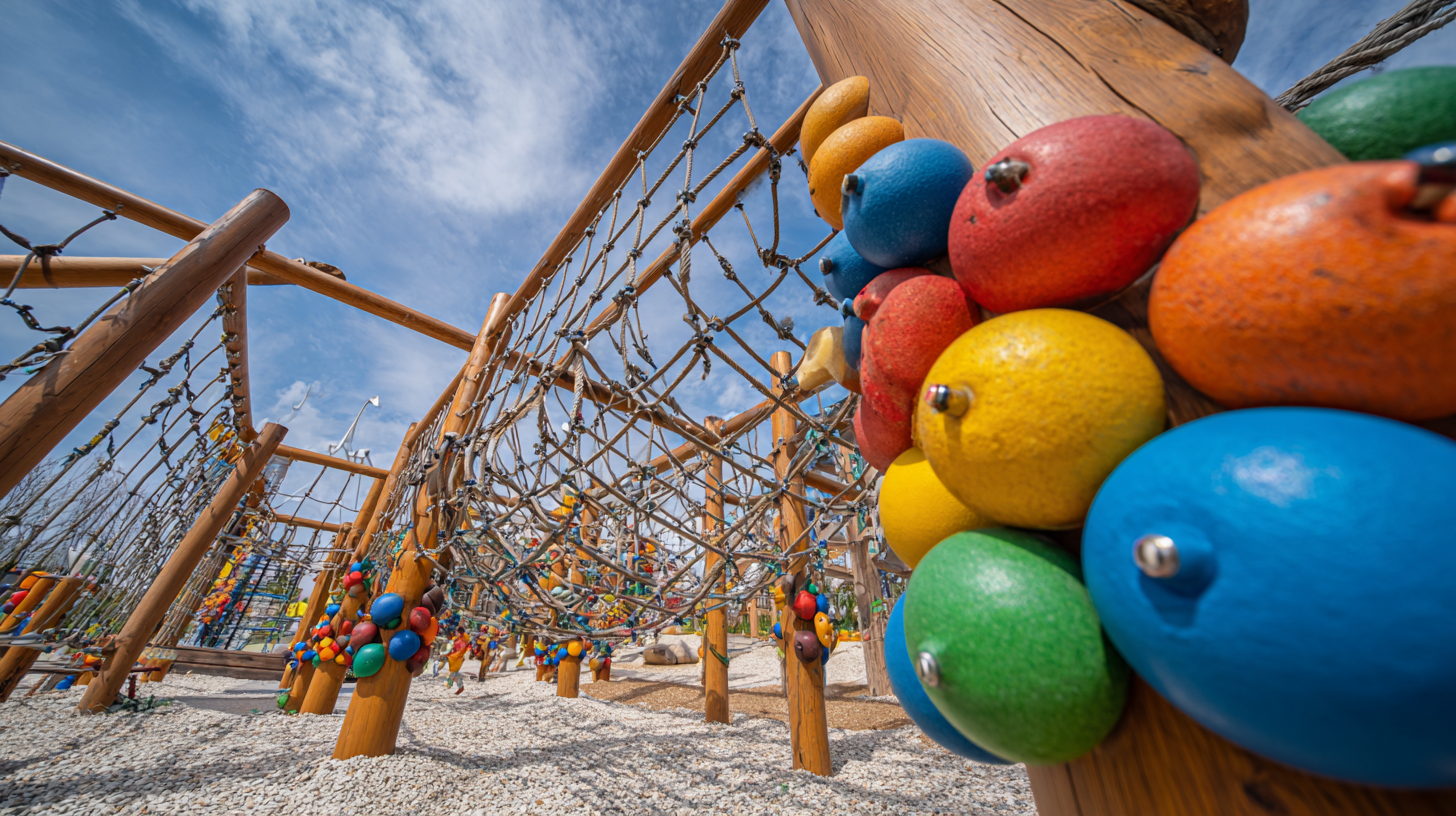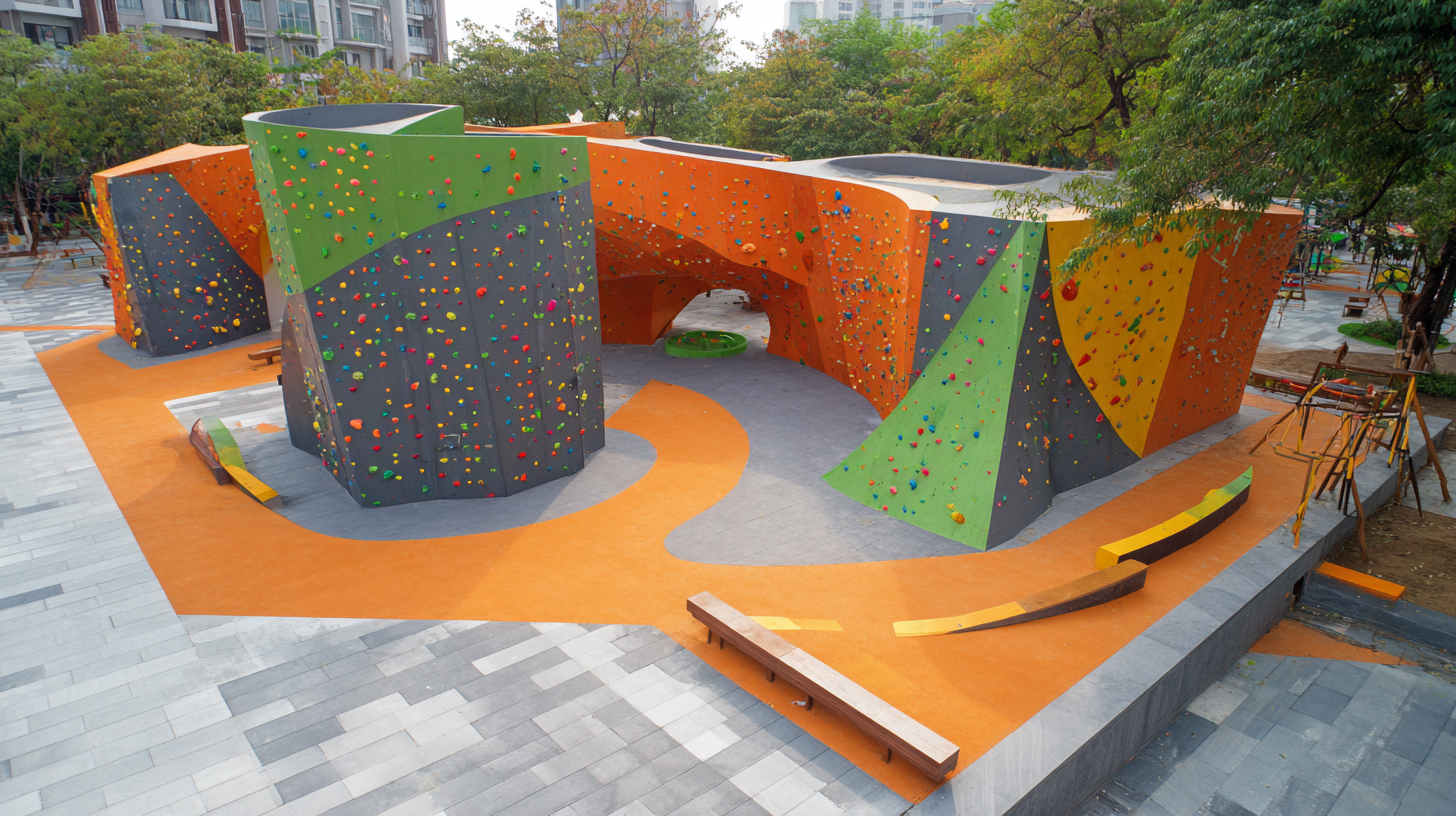
Inquiry
Form loading...
In the rapidly evolving landscape of global trade, the importation of high-quality products, such as climbing playground equipment, has become a focal point for many countries seeking to enhance their recreational facilities. According to a recent market report by Technavio, the global outdoor playground equipment market is projected to grow by over $1.5 billion from 2021 to 2025, reflecting a heightened demand for safe and innovative play structures that promote outdoor activity among children. As China continues to solidify its position as a leading manufacturer known for exceptional quality, the emphasis on obtaining essential certifications cannot be overlooked. These certifications not only ensure compliance with safety standards but also build trust and credibility in international markets. By unlocking the potential of global trade through proper certification, businesses can leverage the growing interest in climbing playgrounds, ultimately fostering a more vibrant and active community for future generations.

 When it comes to importing climbing playground equipment, safety certifications play a crucial role in ensuring the well-being of children. These certifications not only indicate compliance with safety standards but also provide parents and institutions with peace of mind. Before making any purchases, it’s essential to verify that the climbing equipment has been tested and certified by recognized authorities like ASTM or EN. This step will help prevent accidents and guarantee that the equipment is durable enough to withstand frequent use.
When it comes to importing climbing playground equipment, safety certifications play a crucial role in ensuring the well-being of children. These certifications not only indicate compliance with safety standards but also provide parents and institutions with peace of mind. Before making any purchases, it’s essential to verify that the climbing equipment has been tested and certified by recognized authorities like ASTM or EN. This step will help prevent accidents and guarantee that the equipment is durable enough to withstand frequent use.
Tip: Always ask for documentation proving the safety certifications before finalizing your purchase. This not only protects the children using the equipment but also helps you stay compliant with local regulations.
In addition to safety certifications, consider the testing methods used. Reliable equipment undergoes rigorous assessments, including load testing and material inspections. This ensures the climbing structures can bear the weight and activity of children safely.
Tip: Look for a vendor who is transparent about their testing procedures and provides regular updates on compliance with safety standards. This approach will foster trust and ensure that you are investing in quality products for your climbing playground.
As the demand for climbing structures and playground equipment rises, understanding the technical specifications of certified climbing structures becomes increasingly essential. With safety and durability at the forefront, industry experts stress the importance of certifications that meet international standards. For instance, many climbing areas and products, such as the newly inaugurated Asia’s biggest sports climbing wall, are constructed in accordance with guidelines set by the International Federation of Sports Climbing. Such adherence not only guarantees safety but also enhances user experience, meeting the growing expectations of climbers and outdoor enthusiasts.
In recent evaluations, the best climbing helmets of 2025 demonstrated advancements in protective technology. Reports indicate that features like MIPS (Multi-directional Impact Protection System) are becoming standard in climbing helmet design, focusing on reducing rotational forces during impact. Additionally, certifications for climbing playground imports ensure compliance with safety regulations, which is a key factor when selecting the best equipment for climbing enthusiasts. With the growing popularity of climbing walls—like the impressive 85-meter structure in Copenhagen—investing in certified products is no longer just a choice but a necessity for both manufacturers and consumers alike.
| Certification | Description | Applicable Standards | Issued By | Validity Period |
|---|---|---|---|---|
| EN 1176 | Safety requirements for playground equipment | European Norms | European Standards Organization | 5 years |
| ASTM F1487 | Standard safety performance for playground equipment | American Society for Testing and Materials | ASTM | 3 years |
| CPSC Guidelines | Guidelines for the safety of children's playgrounds | Consumer Product Safety Commission | CPSC | N/A |
| ISO 14001 | Environmental management system requirements | International Organization for Standardization | ISO | 3 years |
| ISO 9001 | Quality management systems requirements | International Organization for Standardization | ISO | 3 years |
| EN 1177 | Impact attenuation of playground surfacing | European Norms | European Standards Organization | 5 years |
| CSA Z614 | Children’s play spaces and equipment safety | Canadian Standards Association | CSA | 5 years |
Navigating international standards is crucial for businesses involved in importing climbing playground equipment. With the global market projected to reach $16.8 billion by 2026, ensuring compliance with safety certifications is more important than ever. The International Organization for Standardization (ISO) provides guidelines that help manufacturers and importers to adhere to safety and performance standards. For instance, ISO 8124-1 outlines safety requirements for toys, including climbing structures, to minimize potential hazards for children.
In addition to ISO certifications, there are region-specific standards such as ASTM F1487 in the United States and EN 1176 in Europe, which specifically address the safety of playground equipment. According to a report by MarketsandMarkets, adherence to these standards not only enhances product safety but also significantly lowers liability risks. Importers who navigate these requirements effectively can gain a competitive edge, ultimately ensuring their climbing playgrounds are not only fun but also safe for children around the world. Meeting these international standards is not just a regulatory obligation; it is an essential investment in quality and safety that resonates with parents and caregivers globally.
As the global demand for climbing equipment continues to rise, understanding the market trends and safety compliance regulations becomes increasingly essential for importers. According to the Outdoor Industry Association, the climbing gear market has experienced a growth rate of approximately 5% annually, reflecting the increasing popularity of outdoor activities and adventure sports. In 2022 alone, the U.S. imported over $200 million worth of climbing gear, with significant contributions from manufacturers in Europe and Asia. This data highlights not only the robust market potential but also the competitive landscape that importers must navigate.
Safety compliance plays a crucial role in maintaining the integrity and trustworthiness of climbing equipment. Reports from the European Committee for Standardization (CEN) indicate that nearly 40% of climbing products exported to the EU were found to have discrepancies in safety standards, emphasizing the need for rigorous certification processes. Additionally, the Climbing Business Journal noted that products verified to meet ISO standards have a 30% lower return rate due to safety-related issues. For importers, obtaining essential certifications such as CE marking and UIAA approval is not just a regulatory necessity but also a strategic advantage in ensuring product quality and consumer safety.
When considering the import of climbing playgrounds, ensuring the quality of materials used is paramount. To evaluate the durability and safety of these structures, several essential tests should be performed. One critical assessment is the tensile strength test, which measures the maximum stress a material can withstand while being stretched or pulled. This test is vital for components like ropes and swings, ensuring they can support the weight of children during play, enhancing safety and longevity.

Another important test is the weather resistance evaluation. Climbing playgrounds are subjected to varying environmental conditions, from intense sunlight to heavy rain. Materials like plastics and fabrics need to be tested for UV stability and water resistance. Performing these assessments helps prevent deterioration that could lead to safety hazards over time. Additionally, impact testing is crucial, especially for surfaces beneath climbing structures. This test simulates the fall impact to ascertain the protective qualities of surfaces, ensuring they can effectively minimize injury. By focusing on these essential tests, importers can guarantee high-quality, durable climbing playgrounds that meet safety standards and provide lasting enjoyment for children.
